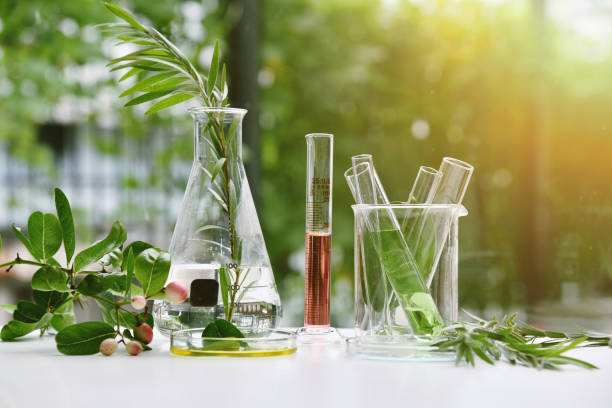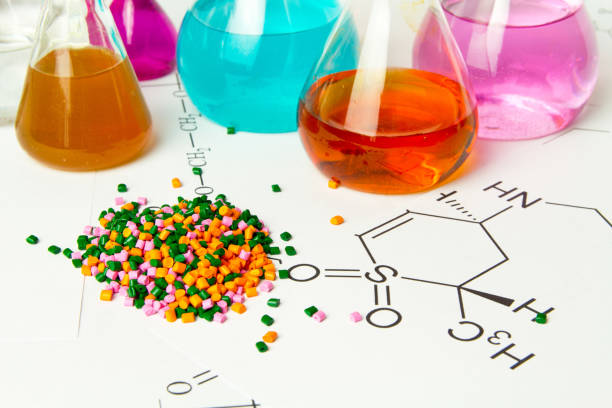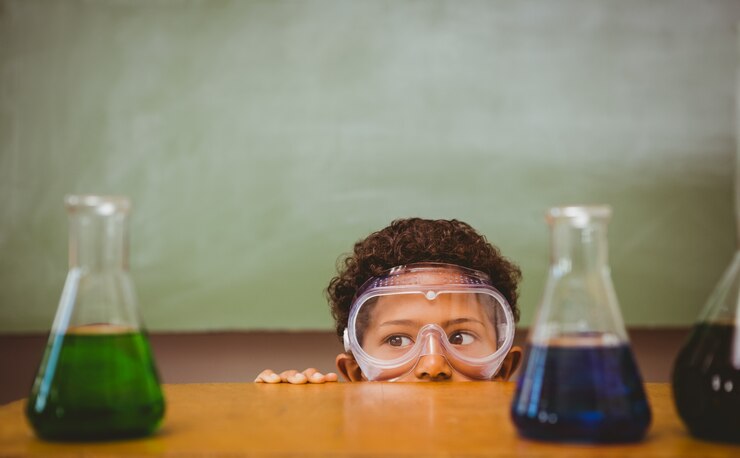Chemistry is not confined to laboratories or textbooks; it is a central part of our daily existence, woven seamlessly into every moment of our lives. From the air we breathe to the food we eat, the clothes we wear, and the emotions we feel, everything is a beautiful demonstration of chemistry in action.
In this comprehensive guide, we explore the profound impact of chemistry in everyday life, uncovering how it silently powers our routines and enhances our well-being.
Introduction to Chemistry in Everyday Life

Chemistry in everyday life refers to the practical applications and phenomena of chemical principles that we encounter daily. It includes everything from the formulation of household products and the digestion of food, medicines, cosmetics, cleaning agents, and emotional responses triggered by chemical messengers in the body.
Chemistry is the branch of science that studies the composition, structure, properties, and changes of matter. It helps explain how substances interact, combine, and transform. This knowledge enables us to create new materials, improve health, conserve the environment, and enhance our quality of life.
Chemistry in the Kitchen
Chemistry isn’t just a subject; it’s a daily experience. Whether it’s cooking a meal, cleaning your home, or even breathing, you’re participating in chemical reactions. Understanding these interactions can help you make smarter choices in your lifestyle.
1. Cooking and Baking

When we cook or bake, we’re conducting real-time chemical reactions:
- Maillard Reaction: It is responsible for the browning of foods and the creation of complex flavors.
- Caramelization: The chemical breakdown of sugars under heat.
- Leavening: Baking soda or baking powder releases CO₂, making cakes rise.
2. Food Preservation
- Salts and acids are used to inhibit bacterial growth.
- Chemical preservatives such as sodium benzoate and potassium sorbate help prolong shelf life.
Chemistry in Cosmetics and Personal Care
Your skincare and cosmetic products are all crafted through careful chemical engineering. Lotions, shampoos, perfumes, and makeup contain a mix of natural and synthetic compounds designed to be safe and effective.
Formulating Beauty Products
Chemists test ingredients for skin compatibility, pH balance, and shelf life. Emulsifiers, humectants, and preservatives are just a few of the ingredients used to maintain product quality and safety.
Fragrance Chemistry
Perfumes are created by blending essential oils, aroma compounds, and solvents in precise ratios. This branch of chemistry allows for the creation of signature scents that last longer and perform better.
Chemistry in Health and Medicine

Modern medicine would not be possible without chemistry. The development of drugs, vaccines, and diagnostic tools all depends on chemical research.
Pharmaceutical Chemistry
Chemists design and synthesize drugs that can treat or prevent diseases. For example, pain relievers like ibuprofen and antibiotics like penicillin are products of pharmaceutical chemistry. Even over-the-counter medications rely on chemical formulations.
Diagnostic Tools and Imaging
Blood tests, MRIs, and CT scans use chemical principles to detect abnormalities in the body. Without chemistry, these lifesaving diagnostic techniques would not exist.
Chemistry in Cleaning Products
From laundry detergents to dishwashing liquids, chemistry helps formulate cleaning agents that effectively remove dirt and kill germs.
How Detergents Work
Detergents contain surfactant molecules that lift grease and grime from surfaces and suspend them in water for easy removal. Bleaches and disinfectants also use chemical reactions to eliminate harmful bacteria and viruses.
Green Chemistry in Cleaning
Eco-friendly cleaning products are developed through green chemistry, which focuses on minimizing environmental harm by reducing the use of toxic or hazardous chemicals.
Chemistry in the Environment
Chemistry is essential for understanding and safeguarding our environment. It aids in tracking pollution levels, designing sustainable materials, and developing environmentally friendly energy alternatives.
Water and Air Quality Testing
Environmental chemists test water and air samples to detect harmful pollutants. This data guides government policies and helps industries comply with environmental regulations.
Renewable Energy Sources
Solar panels, biofuels, and hydrogen cells are innovations born from chemical research aimed at reducing our dependence on fossil fuels.
Chemistry helps us understand and protect the environment:
- Air pollution is tracked through chemical analysis of particulate matter and gases like NO₂ and SO₂.
- Water purification involves processes like chlorination and reverse osmosis.
- Recycling involves chemical separation techniques and reformation of materials like plastics and metals.
Chemistry in Textiles and Clothing
The textile industry is rooted in chemistry:
- Synthetic fibers, including polyester and nylon, are created from materials based on petrochemicals.
- Dyes are chemical compounds that bind to fabrics.
- Wrinkle-free clothing is often treated with formaldehyde-based resins.
Chemistry in Agriculture
Feeding the world depends on chemistry:
- Fertilizers like urea and ammonium nitrate enrich the soil with essential nutrients.
- Pesticides and herbicides protect crops by targeting harmful pests and weeds.
- Soil testing relies on chemical indicators to determine nutrient levels.
Chemistry in Emotions and the Brain

Our thoughts, moods, and feelings are deeply influenced by neurotransmitters, which are chemical messengers.
- Dopamine: Associated with pleasure and reward.
- Serotonin: Regulates mood and sleep.
- Adrenaline: Triggers the fight-or-flight response.
These compounds are synthesized and regulated through biochemical pathways in the body.
Chemistry in Transportation
- Fuel combustion in vehicles involves exothermic chemical reactions that release energy.
- Lubricants reduce friction between moving parts, formulated using hydrocarbons.
- Battery chemistry powers electric vehicles through electrochemical reactions.
Chemistry in Technology and Electronics
- Semiconductors used in computers and phones are refined using chemical processes.
- Lithium-ion batteries power portable electronics via ion exchange.
- LED lights function through electroluminescent materials.
Interesting Chemical Facts in Daily Life
- Chili peppers feel hot due to capsaicin, a chemical that activates pain receptors.
- Chocolate contains theobromine, a mild stimulant that is chemically related to caffeine.
Why Understanding Chemistry Matters
Knowing the chemistry behind everyday phenomena empowers us to:
- Make informed product choices
- Understand health and nutrition better
- Reduce environmental impact
- Appreciate the science around us
The Future of Chemistry in Everyday Life
As technology evolves, the role of chemistry becomes even more significant. From developing biodegradable plastics to designing personalized medicine, chemistry continues to drive innovation.
Nanotechnology and Smart Materials
Future advancements include the use of nanotechnology to create smart materials that can repair themselves, respond to environmental changes, or deliver drugs directly to targeted cells.
Conclusion
Chemistry is not just a subject; it’s the language of life itself. From the food we cook to the emotions we feel, from the medicines we take to the gadgets we use, chemistry is everywhere. Recognizing its role in our everyday life helps us live smarter, healthier, and more sustainably.
What are the examples of chemistry in everyday life?
Chemistry is not confined to laboratories or textbooks, it is a central part of our daily existence, woven seamlessly into every moment of our lives. From the air we breathe to the food we eat, the clothes we wear, and the emotions we feel, everything is a beautiful demonstration of chemistry in action.
In this comprehensive guide, we explore the profound impact of chemistry in everyday life, uncovering how it silently powers our routines and enhances our well-being.
Chemistry in Everyday Life

Chemistry in everyday life refers to the practical applications and phenomena of chemical principles that we encounter daily. It includes everything from the formulation of household products and the digestion of food, medicines, cosmetics, cleaning agents, and emotional responses triggered by chemical messengers in the body.
Chemistry is the branch of science that studies the composition, structure, properties, and changes of matter. It helps explain how substances interact, combine, and transform. This knowledge enables us to create new materials, improve health, conserve the environment, and enhance our quality of life.
Chemistry in the Kitchen
Chemistry isn’t just a subject, it’s a daily experience. Whether it’s cooking a meal, cleaning your home, or even breathing, you’re participating in chemical reactions. Understanding these interactions can help you make smarter choices in your lifestyle.
1. Cooking and Baking

When we cook or bake, we’re conducting real-time chemical reactions:
Maillard Reaction: It is responsible for the browning of foods and the creation of complex flavors.
Caramelization: The chemical breakdown of sugars under heat.
Leavening: Baking soda or baking powder releases CO₂, making cakes rise.
2. Food Preservation
Salts and acids are used to inhibit bacterial growth.
Chemical preservatives such as sodium benzoate and potassium sorbate help prolong shelf life.
Chemistry in Cosmetics and Personal Care
Your skincare and cosmetic products are all crafted through careful chemical engineering. Lotions, shampoos, perfumes, and makeup contain a mix of natural and synthetic compounds designed to be safe and effective.
Formulating Beauty Products
Chemists test ingredients for skin compatibility, pH balance, and shelf life. Emulsifiers, humectants, and preservatives are just a few of the ingredients used to maintain product quality and safety.
Fragrance Chemistry
Perfumes are created by blending essential oils, aroma compounds, and solvents in precise ratios. This branch of chemistry allows for the creation of signature scents that last longer and perform better.
Chemistry in Health and Medicine

Modern medicine would not be possible without chemistry. The development of drugs, vaccines, and diagnostic tools all depends on chemical research.
Pharmaceutical Chemistry: Chemistry in Everyday Life
Chemists design and synthesize drugs that can treat or prevent diseases. For example, pain relievers like ibuprofen and antibiotics like penicillin are products of pharmaceutical chemistry. Even over-the-counter medications rely on chemical formulations.
Diagnostic Tools and Imaging
Blood tests, MRIs, and CT scans use chemical principles to detect abnormalities in the body. Without chemistry, these lifesaving diagnostic techniques would not exist.
Chemistry in Cleaning Products: Chemistry in Everyday Life
From laundry detergents to dishwashing liquids, chemistry helps formulate cleaning agents that effectively remove dirt and kill germs.
How Detergents Work
Detergents contain surfactant molecules that lift grease and grime from surfaces and suspend them in water for easy removal. Bleaches and disinfectants also use chemical reactions to eliminate harmful bacteria and viruses.
Green Chemistry in Cleaning
Eco-friendly cleaning products are developed through green chemistry, which focuses on minimizing environmental harm by reducing the use of toxic or hazardous chemicals.
Chemistry in the Environment
Chemistry is essential for understanding and safeguarding our environment. It aids in tracking pollution levels, designing sustainable materials, and developing environmentally friendly energy alternatives.
Water and Air Quality Testing
Environmental chemists test water and air samples to detect harmful pollutants. This data guides government policies and helps industries comply with environmental regulations.
Renewable Energy Sources
Solar panels, biofuels, and hydrogen cells are innovations born from chemical research aimed at reducing our dependence on fossil fuels.
Chemistry helps us understand and protect the environment:
Air pollution is tracked through chemical analysis of particulate matter and gases like NO₂ and SO₂.
Water purification involves processes like chlorination and reverse osmosis.
Recycling involves chemical separation techniques and reformation of materials like plastics and metals.
Chemistry in Textiles and Clothing
The textile industry is rooted in chemistry:
Synthetic fibers, including polyester and nylon, are created from materials based on petrochemicals.
Dyes are chemical compounds that bind to fabrics.
Wrinkle-free clothing is often treated with formaldehyde-based resins.
Chemistry in Agriculture
Feeding the world depends on chemistry:
Fertilizers like urea and ammonium nitrate enrich the soil with essential nutrients.
Pesticides and herbicides protect crops by targeting harmful pests and weeds.
Soil testing relies on chemical indicators to determine nutrient levels.
Chemistry in Emotions and the Brain

Our thoughts, moods, and feelings are deeply influenced by neurotransmitters, which are chemical messengers.
Dopamine: Associated with pleasure and reward.
Serotonin: Regulates mood and sleep.
Adrenaline: Triggers the fight-or-flight response.
These compounds are synthesized and regulated through biochemical pathways in the body.
Chemistry in Transportation
Fuel combustion in vehicles involves exothermic chemical reactions that release energy.
Lubricants reduce friction between moving parts, formulated using hydrocarbons.
Battery chemistry powers electric vehicles through electrochemical reactions.
Chemistry in Technology and Electronics
Semiconductors used in computers and phones are refined using chemical processes.
Lithium-ion batteries power portable electronics via ion exchange.
LED lights function through electroluminescent materials.
Interesting Chemical Facts in Daily Life
Chili peppers feel hot due to capsaicin, a chemical that activates pain receptors.
Chocolate contains theobromine, a mild stimulant that is chemically related to caffeine.
Why Understanding Chemistry Matters
Knowing the chemistry behind everyday phenomena empowers us to:
Make informed product choices
Understand health and nutrition better
Reduce environmental impact
Appreciate the science around us
The Future of Chemistry in Everyday Life
As technology evolves, the role of chemistry becomes even more significant. From developing biodegradable plastics to designing personalized medicine, chemistry continues to drive innovation.
Nanotechnology and Smart Materials
Future advancements include the use of nanotechnology to create smart materials that can repair themselves, respond to environmental changes, or deliver drugs directly to targeted cells.
Conclusion
Chemistry is not just a subject, it’s the language of life itself. From the food we cook to the emotions we feel, from the medicines we take to the gadgets we use, chemistry is everywhere. Recognizing its role in our everyday life helps us live smarter, healthier, and more sustainably.
How does chemistry affect the food we eat?
What role does chemistry play in cleaning products?
Why is chemistry important in everyday life?
Chemistry is not confined to laboratories or textbooks, it is a central part of our daily existence, woven seamlessly into every moment of our lives. From the air we breathe to the food we eat, the clothes we wear, and the emotions we feel, everything is a beautiful demonstration of chemistry in action.
In this comprehensive guide, we explore the profound impact of chemistry in everyday life, uncovering how it silently powers our routines and enhances our well-being.
Chemistry in Everyday Life

Chemistry in everyday life refers to the practical applications and phenomena of chemical principles that we encounter daily. It includes everything from the formulation of household products and the digestion of food, medicines, cosmetics, cleaning agents, and emotional responses triggered by chemical messengers in the body.
Chemistry is the branch of science that studies the composition, structure, properties, and changes of matter. It helps explain how substances interact, combine, and transform. This knowledge enables us to create new materials, improve health, conserve the environment, and enhance our quality of life.
Chemistry in the Kitchen
Chemistry isn’t just a subject, it’s a daily experience. Whether it’s cooking a meal, cleaning your home, or even breathing, you’re participating in chemical reactions. Understanding these interactions can help you make smarter choices in your lifestyle.
1. Cooking and Baking: Chemistry in Everyday Life

When we cook or bake, we’re conducting real-time chemical reactions:
Maillard Reaction: It is responsible for the browning of foods and the creation of complex flavors.
Caramelization: The chemical breakdown of sugars under heat.
Leavening: Baking soda or baking powder releases CO₂, making cakes rise.
2. Food Preservation: Chemistry in Everyday Life
Salts and acids are used to inhibit bacterial growth.
Chemical preservatives such as sodium benzoate and potassium sorbate help prolong shelf life.
Chemistry in Cosmetics and Personal Care: Chemistry in Everyday Life
Your skincare and cosmetic products are all crafted through careful chemical engineering. Lotions, shampoos, perfumes, and makeup contain a mix of natural and synthetic compounds designed to be safe and effective.
Formulating Beauty Products
Chemists test ingredients for skin compatibility, pH balance, and shelf life. Emulsifiers, humectants, and preservatives are just a few of the ingredients used to maintain product quality and safety.
Fragrance Chemistry: Chemistry in Everyday Life
Perfumes are created by blending essential oils, aroma compounds, and solvents in precise ratios. This branch of chemistry allows for the creation of signature scents that last longer and perform better.
Chemistry in Health and Medicine: Chemistry in Everyday Life

Modern medicine would not be possible without chemistry. The development of drugs, vaccines, and diagnostic tools all depends on chemical research.
Pharmaceutical Chemistry: Chemistry in Everyday Life
Chemists design and synthesize drugs that can treat or prevent diseases. For example, pain relievers like ibuprofen and antibiotics like penicillin are products of pharmaceutical chemistry. Even over-the-counter medications rely on chemical formulations.
Diagnostic Tools and Imaging: Chemistry in Everyday Life
Blood tests, MRIs, and CT scans use chemical principles to detect abnormalities in the body. Without chemistry, these lifesaving diagnostic techniques would not exist.
Chemistry in Cleaning Products: Chemistry in Everyday Life
From laundry detergents to dishwashing liquids, chemistry helps formulate cleaning agents that effectively remove dirt and kill germs.
How Detergents Work: Chemistry in Everyday Life
Detergents contain surfactant molecules that lift grease and grime from surfaces and suspend them in water for easy removal. Bleaches and disinfectants also use chemical reactions to eliminate harmful bacteria and viruses.
Green Chemistry in Cleaning: Chemistry in Everyday Life
Eco-friendly cleaning products are developed through green chemistry, which focuses on minimizing environmental harm by reducing the use of toxic or hazardous chemicals.
Chemistry in the Environment: Chemistry in Everyday Life
Chemistry is essential for understanding and safeguarding our environment. It aids in tracking pollution levels, designing sustainable materials, and developing environmentally friendly energy alternatives.
Water and Air Quality Testing: Chemistry in Everyday Life
Environmental chemists test water and air samples to detect harmful pollutants. This data guides government policies and helps industries comply with environmental regulations.
Renewable Energy Sources: Chemistry in Everyday Life
Solar panels, biofuels, and hydrogen cells are innovations born from chemical research aimed at reducing our dependence on fossil fuels.
Chemistry helps us understand and protect the environment: Chemistry in Everyday Life
Air pollution is tracked through chemical analysis of particulate matter and gases like NO₂ and SO₂.
Water purification involves processes like chlorination and reverse osmosis.
Recycling involves chemical separation techniques and reformation of materials like plastics and metals.
Chemistry in Textiles and Clothing: Chemistry in Everyday Life
The textile industry is rooted in chemistry:
Synthetic fibers, including polyester and nylon, are created from materials based on petrochemicals.
Dyes are chemical compounds that bind to fabrics.
Wrinkle-free clothing is often treated with formaldehyde-based resins.
Chemistry in Agriculture: Chemistry in Everyday Life
Feeding the world depends on chemistry:
Fertilizers like urea and ammonium nitrate enrich the soil with essential nutrients.
Pesticides and herbicides protect crops by targeting harmful pests and weeds.
Soil testing relies on chemical indicators to determine nutrient levels.
Chemistry in Emotions and the Brain: Chemistry in Everyday Life

Our thoughts, moods, and feelings are deeply influenced by neurotransmitters, which are chemical messengers.
Dopamine: Associated with pleasure and reward.
Serotonin: Regulates mood and sleep.
Adrenaline: Triggers the fight-or-flight response.
These compounds are synthesized and regulated through biochemical pathways in the body.
Chemistry in Transportation: Chemistry in Everyday Life
Fuel combustion in vehicles involves exothermic chemical reactions that release energy.
Lubricants reduce friction between moving parts, formulated using hydrocarbons.
Battery chemistry powers electric vehicles through electrochemical reactions.
Chemistry in Technology and Electronics: Chemistry in Everyday Life
Semiconductors used in computers and phones are refined using chemical processes.
Lithium-ion batteries power portable electronics via ion exchange.
LED lights function through electroluminescent materials.
Interesting Chemical Facts in Daily Life: Chemistry in Everyday Life
Chili peppers feel hot due to capsaicin, a chemical that activates pain receptors.
Chocolate contains theobromine, a mild stimulant that is chemically related to caffeine.
Why Understanding Chemistry Matters: Chemistry in Everyday Life
Knowing the chemistry behind everyday phenomena empowers us to:
Make informed product choices
Understand health and nutrition better
Reduce environmental impact
Appreciate the science around us
The Future of Chemistry in Everyday Life: Chemistry in Everyday Life
As technology evolves, the role of chemistry becomes even more significant. From developing biodegradable plastics to designing personalized medicine, chemistry continues to drive innovation.
Nanotechnology and Smart Materials: Chemistry in Everyday Life
Future advancements include the use of nanotechnology to create smart materials that can repair themselves, respond to environmental changes, or deliver drugs directly to targeted cells.
Conclusion
Chemistry is not just a subject, it’s the language of life itself. From the food we cook to the emotions we feel, from the medicines we take to the gadgets we use, chemistry is everywhere. Recognizing its role in our everyday life helps us live smarter, healthier, and more sustainably.
